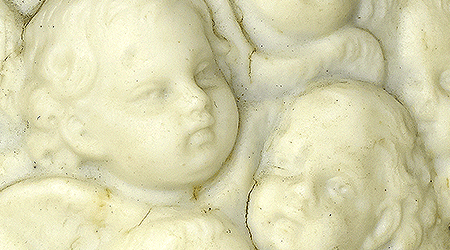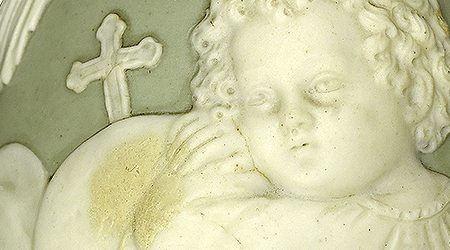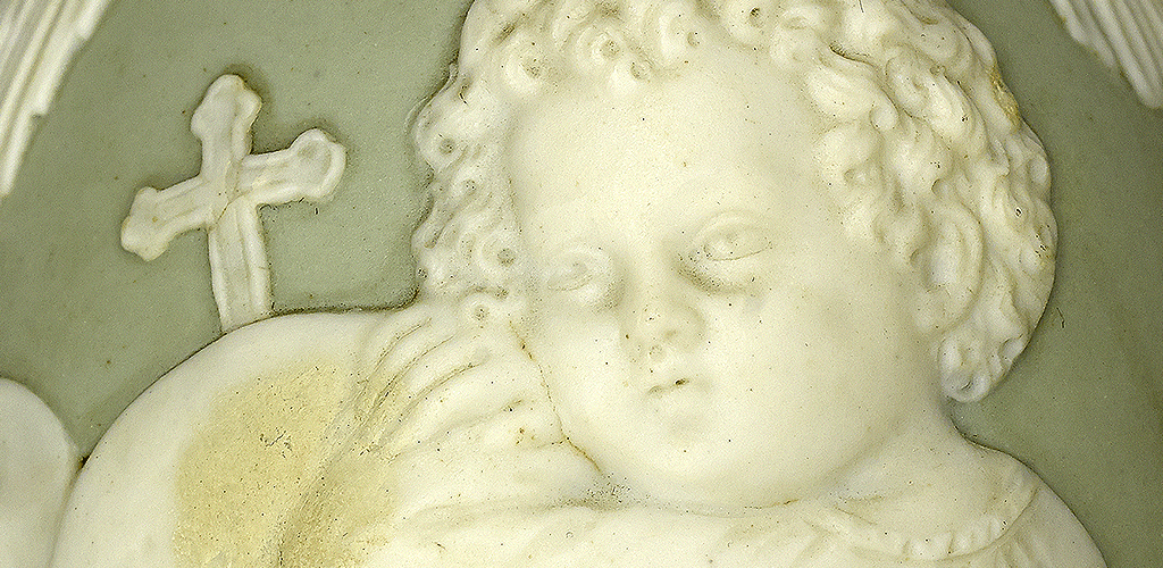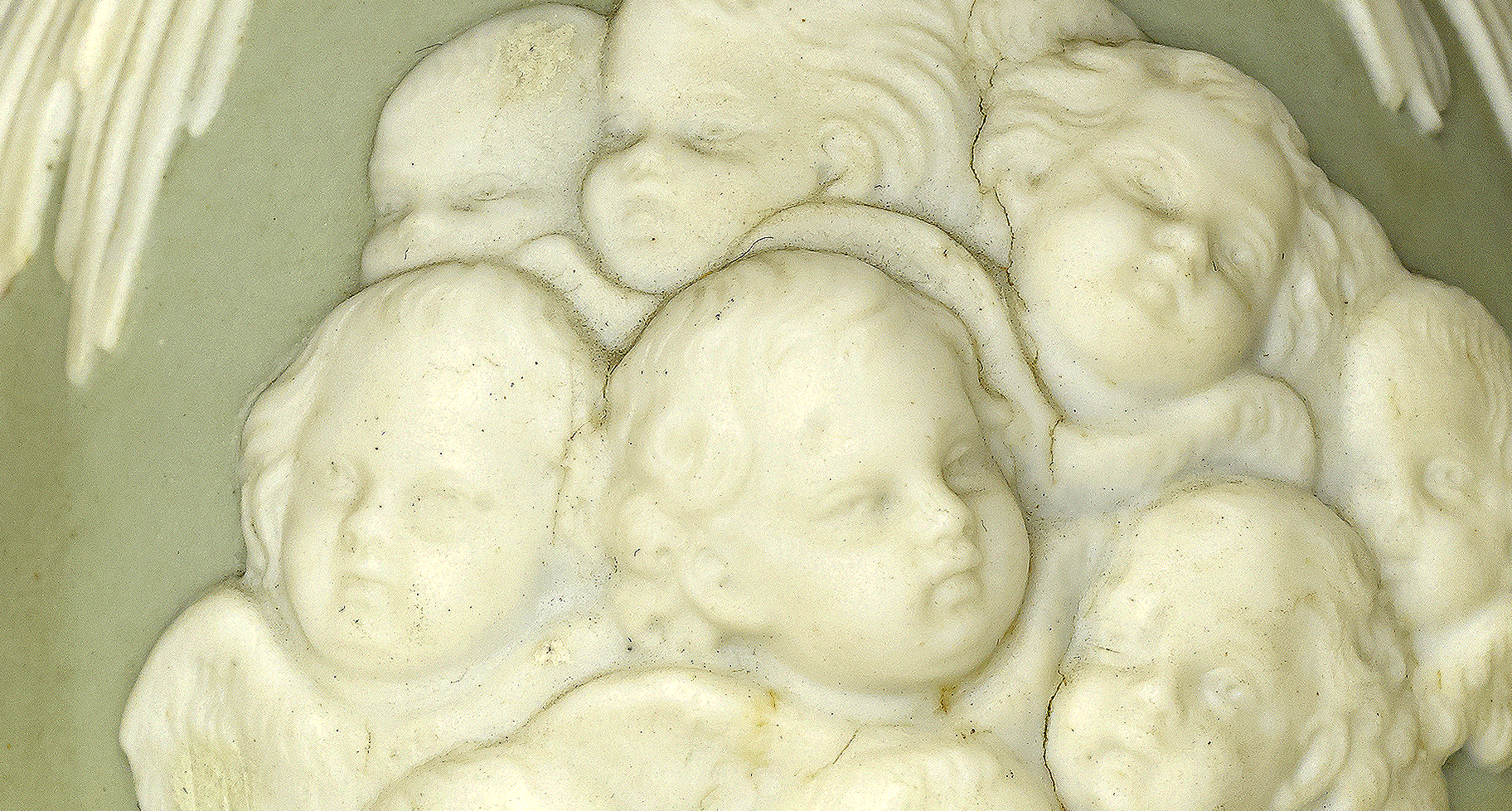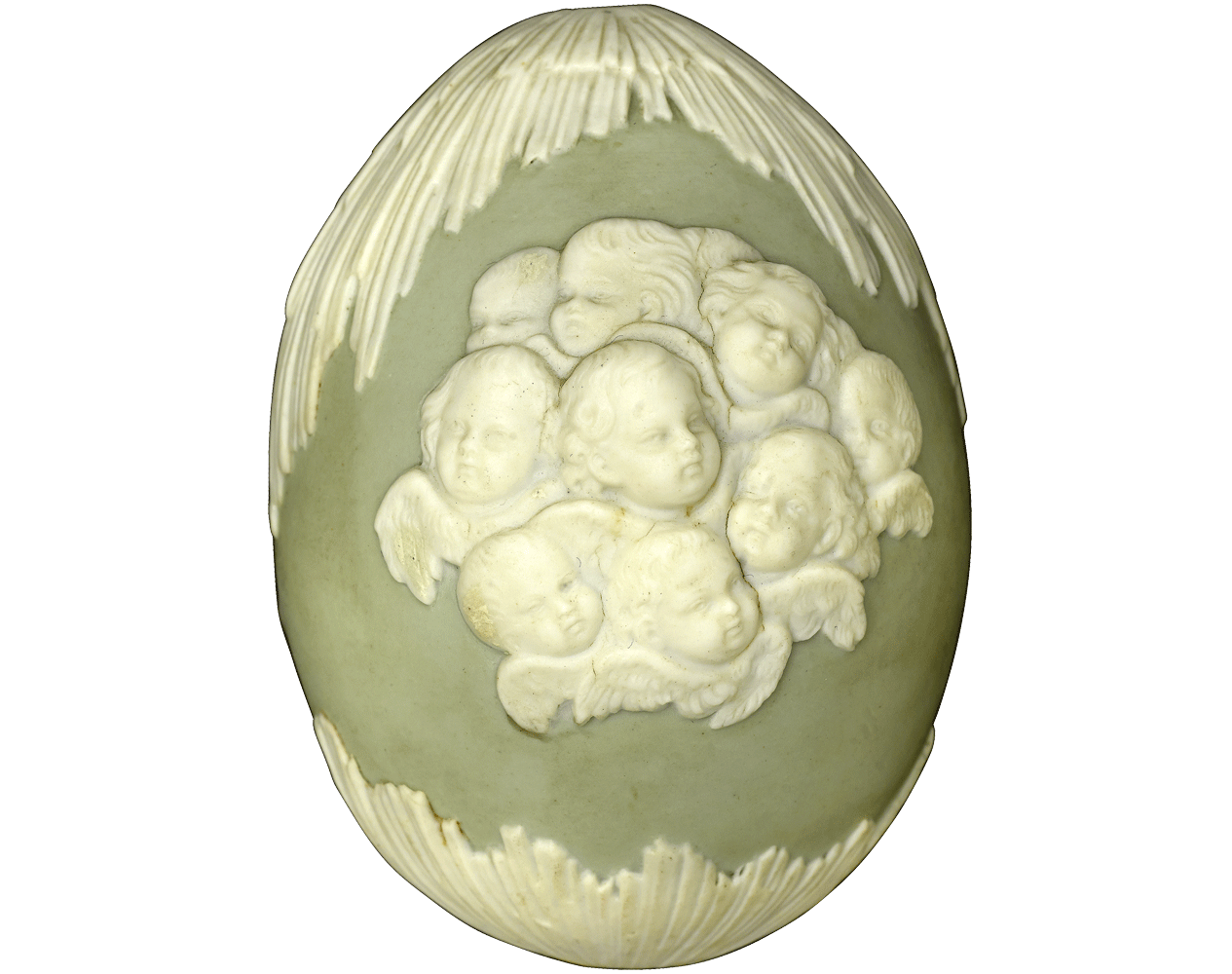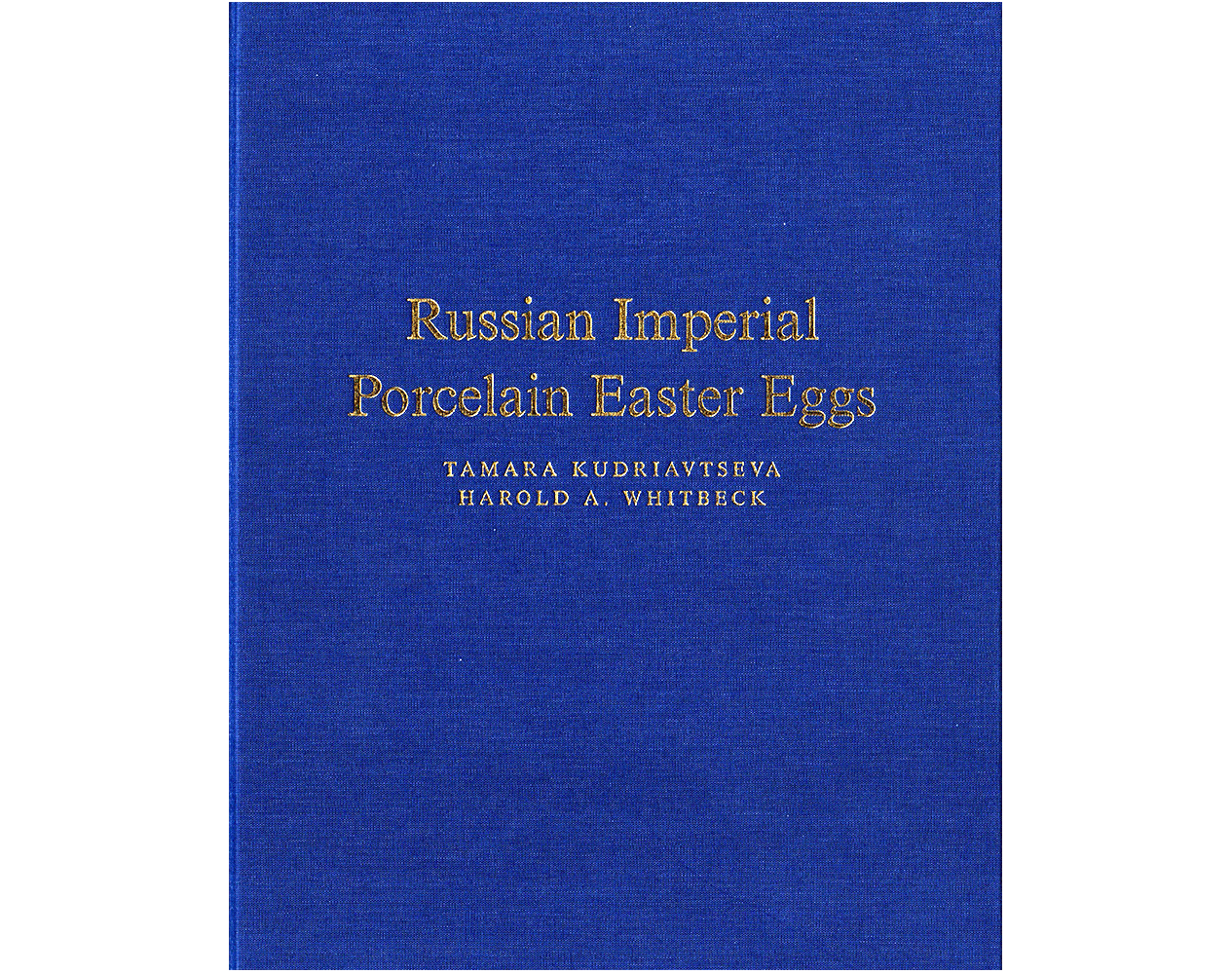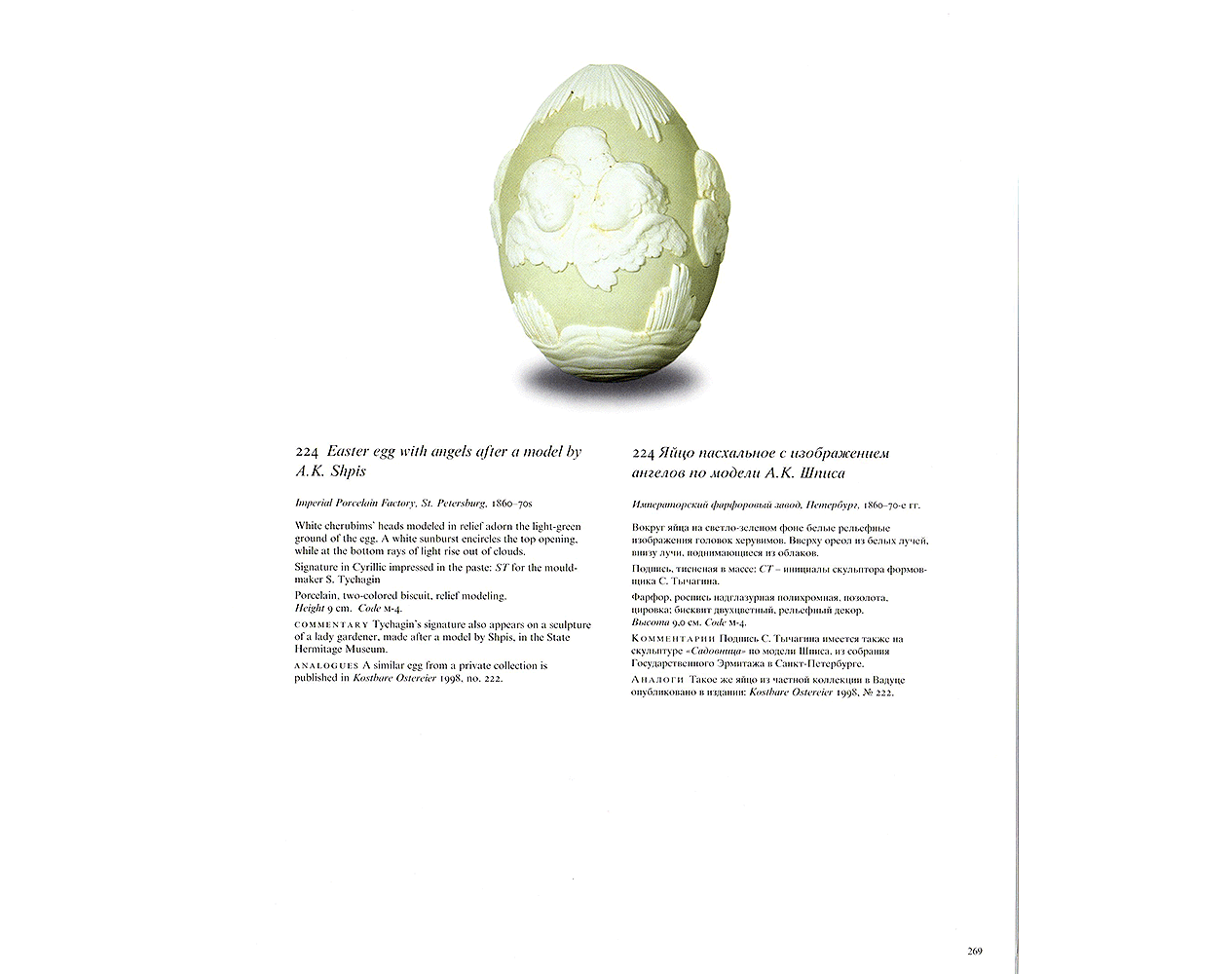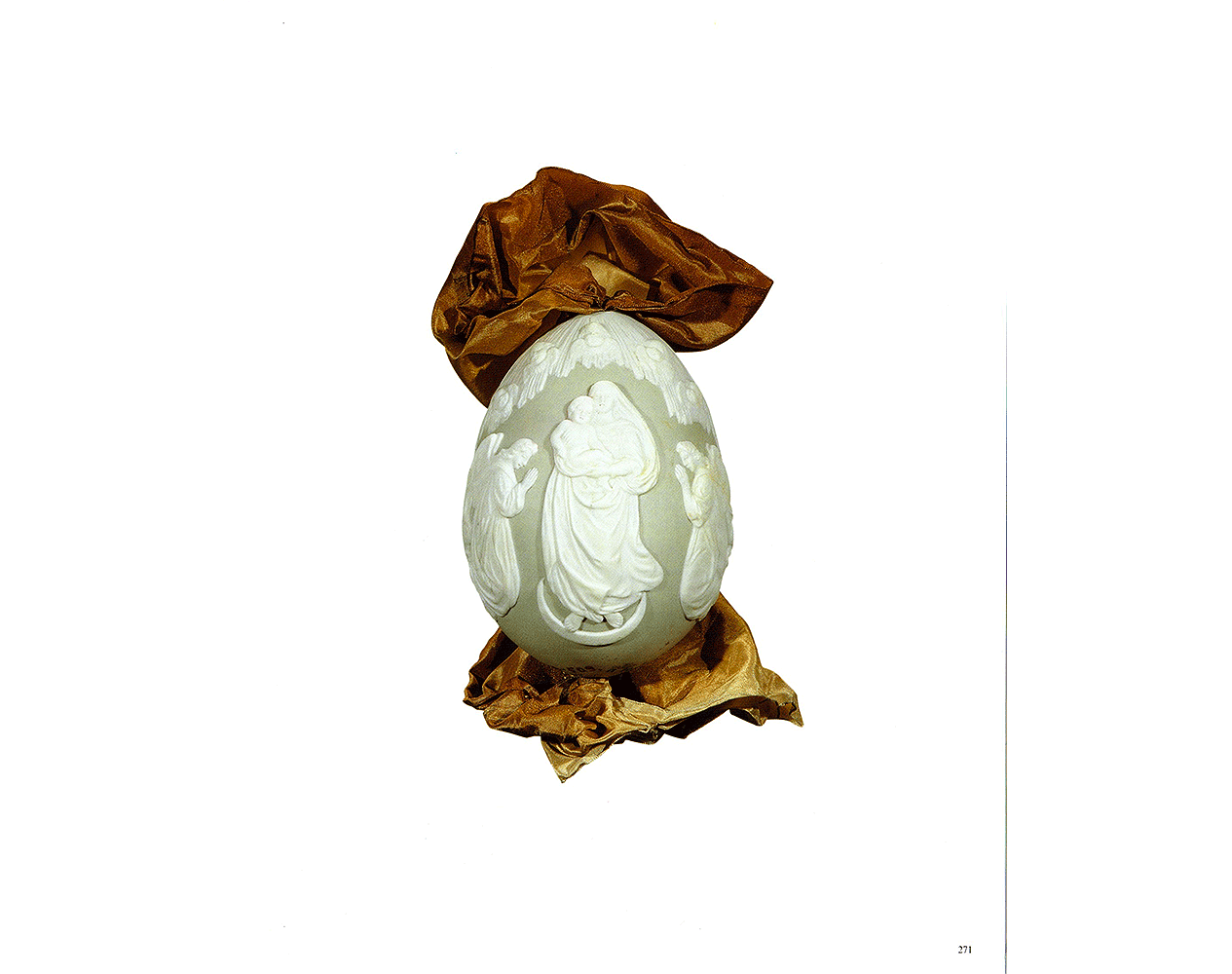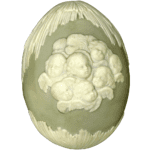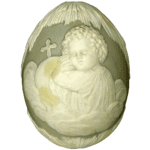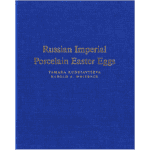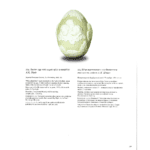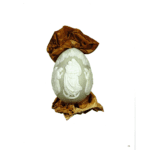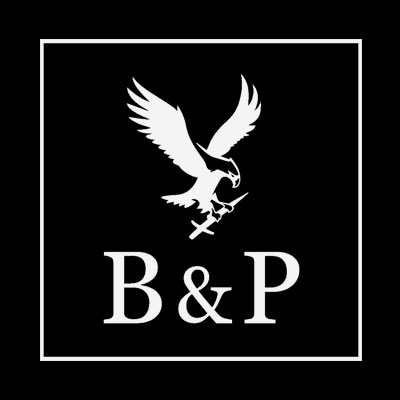A biscuit, or bisque, porcelain Easter egg decorated with an image of the infant Christ on one side and a group of angels on the other, both modelled in white relief over a light green ground, the top and bottom modelled with radiating sunburst.
In the second half of the nineteenth century, the Imperial Porcelain Factory began to produce vases, decorative plaques, and Easter eggs in two-colour biscuit in the manner of Wedgwood. For similar eggs, see T. Kudriavtseva & H. Whitbeck, Russian Imperial Porcelain Easter Eggs, London, 2001, no. 224, p. 269 & no. 225 pp. 270-271.
